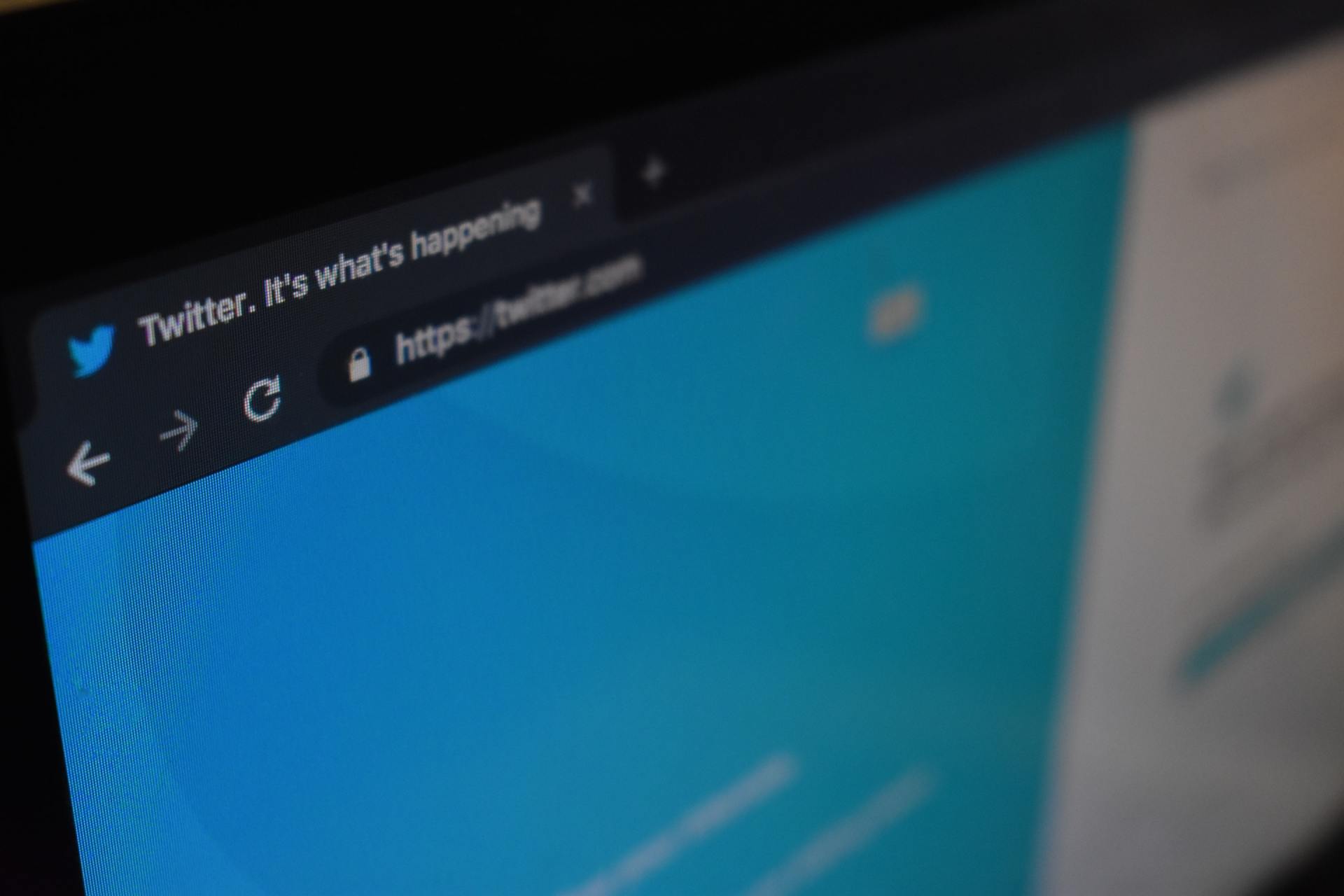5 templates for Sales Emails and InMails- that really work!
Bejoy Peter • June 3, 2020
Outreach inspiration for different situations and stages of the buyer journey
You’ll send a lot of prospecting
emails and InMails in 2020- and you’ll spend a fair bit of time racking your brains for the combination of words and phrases to improve your response rate.
2. The Problem-Solver Approach:
Okay, so maybe that wasn’t the most original prediction that you’ve heard, but it’s certainly one of the most pertinent. The art and science of selling has evolved
in many ways: leveraging networks for warm introductions, prospecting intelligently on social media, leading with content, building personal brands
prior to reaching out. However, there are aspects of our craft that haven’t changed, and which we wouldn’t necessarily expect to. Knowing the right combination of words to earn attention, entice someone to read, and provide a compelling reason to respond is one of them. Sales people have been testing different approaches from the days when they first put ink pen to paper. It’s the same persuasive challenge today as it was then.
The key to prospecting efficiently and effectively through email and InMail
is not starting with a blank subject line and screen each time. Prospecting emails and InMails need to feel distinct and individually relevant – but experience shows they are most effective when they follow one of five broad outlines. Our own sales teams at LinkedIn swear by these: five core templates to suit different prospects, different situations, and different stages of the buyer journey:
1. The Common Ground Approach:
If you’re researched a prospect online prior to reaching out, then this is the template for taking advantage of that work. It’s built around a mutual interest, hobby or acquaintance, and a current reason for reaching out. Crucially, it doesn’t attempt to translate this common ground towards a deal immediately. The focus is more on building rapport. It’s important to get the balance right with this style of outreach – you want to come across as informed, not creepy.
Lost for words? Here’s your starting template for inspiration:
Subject line:
[Prospect Name], Jessie recommended I reach out
Message:
Hi [Prospect Name],
Our mutual connection, [connection name], and I were talking recently about [hot topic]. She said you were an expert on this issue.
I’m writing an article about [hot topic] because it’s relevant, timely, yet confusing to many of my customers. Can I include your perspective, [Prospect Name]?
Regards, [Your Name]
2. The Problem-Solver Approach:
What do B2B buyers really want from sales people? Applied insight and information that’s relevant to their specific business. If your prospecting has uncovered evidence of a current business need, then this is the template to help leverage that in your outreach. A key question to consider is whether to mention your solution – or save that for later. It comes down to your individual judgment – but a thought leadership asset like a relevant guide or white paper can be a very effective way of introducing your expertise without hitting them over the head with it.
Lost for words? Here’s a starting template for inspiration:
Subject line:
[Prospect Name], How to put an end to [problem]
Message:
Hi [Prospect Name],
Your LinkedIn post discussing how your company is struggling to overcome [problem] made me think of others I know experiencing the same frustration. What seems to work is when companies tackle these three core issues:
• Lack of integrated systems
• Manual processes
• Unawareness about the latest options
[Prospect Name], let me know if you’d like me to send an eBook my company put together that spells out how to effectively address these issues.
Regards, [Your Name]
3. The Case Study Approach:
Human beings love a good story – and smart sales reps know it. According to the 2017 B2B Buyers Survey from Demand Gen Report, 67% of those making purchase decisions rely on peer recommendations and 41% rely on case studies. That means a prospecting email that can persuasively introduce a customer story is a hugely valuable asset.
Lost for words? Here’s a starting template for inspiration:
Subject line:
[Prospect Name], Here’s how to drive X% higher revenues
Message:
Hi [Prospect Name],
Your latest company blog post showcases your strategic initiative to do [initiative name]. Congratulations on spearheading such an important endeavour!
As you prepare to move forward, you’ll be interested to learn how others in your position pulled off the same project successfully. In fact, I know of [prospect’s role] in three companies very similar to yours that generated an average of 17% higher revenues by using [your solution] to power their new processes.
[Prospect Name], let me know if you’d like me to forward the case studies detailing how they achieved such impressive results.
Regards, [Your Name]
4. The Giver Approach:
You’d be hard pressed to find someone who passes on a free offer, if it’s something of actual value to them. Use that to your advantage when sending an email to prospective buyers. Whether you’re offering an ebook, a free trial, or a free evaluation, make the offer the focal point of your email. The more exclusive or insightful it is, the more likely it is that your prospect will see it as valuable.
Lost for words? Here’s a starting template for inspiration:
Subject line:
[Prospect Name], find out how your website stacks up
Message:
Hi [Prospect Name],
Your content-rich website is visually stunning, but I ran a free performance test that shows it might not be loading quickly enough for your site visitors.
Would you like to see the results and how your site compares to the competition?
Regards, [Your Name]
5. The No-Nonsense Approach:
According to Boomerang analysis of 40 million sales emails, the sweet spot for length is 50-125 words. That means it often pays to be straightforward. Consider using bullet points to quickly point out how your solution benefits your prospective client.
Lost for words? Here’s a starting template for inspiration:
Subject line:
[Prospect Name 1], [Prospect Name 2], and [Prospect Name 3], thoughts on [product]?
Message:
Hi [Prospect Name 1], [Prospect Name 2] and [Prospect Name 3]
Now that you have trial-ed [product] for three months, I want to confirm you are experiencing the impact we discussed:
• Less manual data entry
• Faster financial closings
• More accurate monthly reports
What are next steps to get you signed up for an enterprise license, so your entire finance team can take advantage of [product]?
Regards, [Your Name]
We the hope the article adds value to your business communication!
Best,
Bejoy Peter- Digital Creator & Communications Strategist
Email: info@VisionKraft.com | Phone: +91 9850 555 795
Vision Kraft Media Works Pvt. Ltd.
- the perception management tools company!
We the hope the article adds value to your business communication!
Best,
Bejoy Peter- Digital Creator & Communications Strategist
Email: info@VisionKraft.com | Phone: +91 9850 555 795
Vision Kraft Media Works Pvt. Ltd.
- the perception management tools company!

Inbound marketing has continued to displace outbound marketing as a company's primary means of generating leads, building its brand and growing its audience. However, this is not a market-specific phenomenon. It's market-agnostic and widely-endorsed across multiple industries ; companies now see digital marketing as their primary lead generation strategy and the cog that makes this strategy work is producing great content. Content provides that continuous flow of leads online that keeps your funnel full of new opportunities. When content is combined with marketing automation, it takes lead nurturing to the next level by continually providing customers with action-based triggers, important reminders and brand messaging. The focus is to reintroduce the same customers into the same sales funnel by relying upon predetermined triggers. Customer actions then force you to re-engage your audience and guide them back through your buying process. It's a continuous feedback loop and one that grows business leads. Lead nurturing is the process of developing relationships with buyers at every stage of the sales funnel, and through every step of the buyer’s journey. It focuses marketing and communication efforts on listening to the needs of prospects, and providing the information and answers they need. On average, 50% of the leads in any system are not yet ready to buy (Marketo) Almost 80% of new leads never become sales (MarketingSherpa). Companies that excel at lead nurturing generate 50% more sales ready leads at a 33% lower cost (Marketo) Nurtured leads makes 47% larger purchases than non-nurtured leads (The Annuitas Group). Effectively developing leads in today’s buyer-driven marketplace means establishing and nurturing buyer relationships with a strategic lead scoring system, and then filling out that framework with a thorough content marketing plan. Best practices for effective lead nurturing: 1. Personalize Your lead nurturing email campaigns should be personal. Tailoring each email to the interests and behavior or even name and demographics of your leads and prospects, makes it resonate that much more. 2. Educate according to the buyer's journey One of the most crucial steps in closing the sales cycle is educating your prospects and giving them the information they need in their current state of the buyer's journey. 3. Don't email leads every day A sure-fire way to have your leads immediately unsubscribing is by emailing them every day. 4. Don't send every lead every email You've gotten the jist by now. Every lead is different and likely in a different stage of their buyer's journey. With this in mind, there is no way you can effectively nurture ALL of your leads with the same email. 5. Re-engage when necessary Are you finding that your leads aren't opening your emails as often or aren't responding to your sales calls? Try re-engaging them with email marketing. 6. Start ASAP Lead nurturing doesn’t have to wait until a prospect has expressed purchase intent. You can start nurturing individuals as soon as they express interest in any part of your business, even if it’s just your blog content. 7. Create content around consumer pain points Given how the Web has empowered buyers, marketers have to shift away from self-centered content and provide information that’s useful to their buyers. 8. Don’t rely purely on email lead nurturing It’s important to personalize your marketing messages outside of email as well. You don’t want show every website visitor the same static and generic message that may or may not apply to them. One way to personalize marketing messages on your website is to use dynamic calls-to-action (or Smart CTAs). The process of lead nurturing sounds complicated, but it's well worth the effort. It will take some time to get everything implemented, but after with some small tweeks to your lead scoring, email copy, and other details until you start getting the conversion rates you want. We the hope the article adds value to your business communication! Best, Bejoy Peter- Digital Creator & Communications Strategist Email: info@VisionKraft.com | Phone: +91 9850 555 795 Vision Kraft Media Works Pvt. Ltd. - the perception management tools company!

When you start your business , many things have to be taken into account. Amongst the tons of seemingly more important things, you might question the need for using Facebook. Often people end up feeling that it is too trivial a task and can be accomplished at anytime. Here are some reasons why you should have your presence on a social networking giant like Facebook and take it very seriously: Customer Interaction: Having your business on Facebook through a fan-page or a group is a great way to learn more about your customers. Through comments or posts, you get to have direct feedback and conversations with your target audience . The people who like your fan-page or join your group are only there because they want to be. They are there to know what they can about you and you can do the same thing. Give a personal touch to your business: Being well connected is important for any business, especially for a small one. You need to be able to communicate with people and grow your contacts. The best possible way to do that is through direct involvement. Facebook allows you to give your business an image and then you can actually have live conversations with people who matter, making it a more personal experience than what you get on a TV. Develop a loyal fan base: Facebook allows you to develop your very own community. All you need to do is, post links and content that is both relevant and useful. You can even have promotional campaigns and contests through your page and offer incentives as well. If done correctly, you will find that you can develop a loyal community for your business on Facebook. SEO: Search Engine Optimisation is a key aspect for anyone who wants to build a significant presence on the web. Having a Facebook page for your business can help you in your SEO efforts as well. All the links and posts on the page are indexed by search engines. So having a page flowing with continuous relevant content will definitely give you a jump in search engine rankings. Beat your competition: One of the biggest reasons for you to make sure that you are on Facebook is that your competition might already be there. In this cut throat environment, lagging behind will make it really hard for your business to succeed. Viral promotion: If someone ends up liking your page then it appears in their news feed. This makes it possible for your business to be in their eyes on a regular basis through status updates or content posting. What’s more, if they comment on your post, their friends will also see your post and this will help in viral promotion of your business. Facebook Ads: Your business at Facebook is not just limited to a fan page or a group. Facebook also offers you a chance to put up advertising campaigns. You can build your advertisements, and as per your budget requirements, go for a campaign suitable for your business. You can also choose the set of people to whom these ads will be visible. You can target your ads on the basis of demographics, educational level, interests etc. It is also up to you to decide how often these ads will appear. Save money: Apart from these facts, Facebook is free. You do not need to spend anything for promoting your company through a Facebook page. Facebook already has people addicted to it. This means you do not have to look for customers – they are already there. Today when you look at Facebook and the groups or fan pages that exist on the site, you will find that every popular brand is there. They are not only there but are active on almost a daily basis. For the present generation, who spend a lot more time on the internet than on the TV, brands needed to change their approach . Facebook provides the best possible solution in this scenario. However, it is not only the big brands that make the full use of Facebook’s social media power. Even small businesses can benefit greatly if they make optimal use of the various features that Facebook has to offer. We the hope the article adds value to your business communication! Best, Bejoy Peter- Digital Creator & Communications Strategist Email: info@VisionKraft.com | Phone: +91 9850 555 795 Vision Kraft Media Works Pvt. Ltd. - the perception management tools company!

If you have an existing site, or plan to develop one in the near future , it's important to understand the characteristics that can make or break the effectiveness of your online investment. An unattractive or poorly built site will do more to hurt your business than to help it. In this article, we look at the five general components involved in making a website successful. Key Elements Of An Effective Website Appearance Content Functionality Website Usability Search Engine Optimisation The most effective website will reflect best practices across all of these elements. 1. APPEARANCE A site must be visually appealing, polished and professional. Remember, it's reflecting your company, your products and your services. Your website may be the first, and only, impression a potential customer receives of your company. An attractive site is far more likely to generate a positive impression and keep visitors on your site once they arrive. As businesses large and small continue to populate the web, your challenge is to attract and keep users' attention. Ideas like this are what PR professionals pay attention to keep their businesses successful. Good use of colour: an appropriate colour scheme will contain 2 or 3 primary colours that blend well and create a proper mood or tone for your business. Don't overdo the colour, as it can distract from the written content. Text that is easily read: The most easily read combination is black text on a white background, but many other colour combinations are acceptable if the contrast is within an appropriate range. Use fonts that are easy to read and are found on most of today's computer systems. depending on your audience. Keep font size for paragraph text between 10 and 12 points. Meaningful graphics: Graphics are important, as they lend visual variety and appeal to an otherwise boring page of text. However, don't over-use them, and make sure that add meaning or context to your written content. Don’t overload any one page with more than 3 or 4 images. Quality photography: A simple way to increase visual appeal is to use high quality photography . High quality product images are especially important for online retailers. Simplicity: Keep it simple and allow for adequate white space. Uncluttered layouts allow viewers to focus on your message. Don't overload your site with overly complex design, animation, or other effects just to impress your viewers. 2. CONTENT Along with style, your site must have substance. Remember that your audience is looking for information that will help them make a decision, so it should be informative and relevant. Use this opportunity to increase visitor confidence in your company's knowledge and competence. Short and organised copy: Clearly label topics and break your text up into small paragraphs. Don't bore your visitors with visually overwhelming text. You've got less than 10 seconds to hook your visitors, so grab their attention by being clear, concise and compelling. Update your content regularly: No one likes to read the same thing over and over again. Dead or static content will not bring visitors back to your site! Speak to your visitors: Use the word you as much as possible. Minimise the use of I, we and us. Consider a pro: Unless you’re an especially good writer, consider using a professional to write or edit your text content. A good writing resource is How to Write for the Web. But What About the Glitz? Flashy graphics and animation are tempting, and can have a very positive impact on user experience. Just use them appropriately and keep some simple guidelines in mind: Use multimedia to entertain and enlighten your prospects. An animated banner, snappy video or interactive content will add to your site's "interest quotient" and keep your visitors around longer. BUT -- don't force your visitors to endure something they're not interested in or don't have time for, and don't let the "rich media" overwhelm your other content. Make it "to go". Provide downloadable podcasts, presentations and forms for users who can't stay long, but want to take some of your information with them. Don't neglect your HTML content for the sake of glitz. Search Engines don't have ears, and can't read Flash, JavaScript or even PDFs . 3. FUNCTIONALITY Every component of your site should work quickly and correctly. Broken or poorly constructed components will only leave your visitors frustrated and disillusioned with your company. Across the spectrum, everything should work as expected, including hyperlinks, contact forms, site search, event registration, and so on. Error-free copy: Remember the exposure your website will get. Double-check your facts and figures, as you don't know who may be quoting you tomorrow. Nor do you want to be recognised or remembered for typos, incorrect grammar and punctuation, or misspellings. Spelling mistakes and bad grammar are as unforgivable on a website as they are in other company materials. 4. WEBSITE USABILITY A critical, but often overlooked component of a successful website is its degree of usability. Your site must be easy to read, navigate, and understand. Some key usability elements include: Simplicity: The best way to keep visitors glued to your site is through valuable content, good organization and attractive design. Keep your site simple and well organised. Fast-loading pages: A page should load in 20 seconds or less via dial-up; at more than that, you'll lose more than half of your potential visitors. Minimal scroll: This is particularly important on the first page. Create links from the main page to read more about a particular topic. Even the Search Engines will reward you for this behaviour. Consistent layout: Site layout is extremely important for usability. Use a consistent layout and repeat certain elements throughout the site. Prominent, logical navigation: Place your menu items at the top of your site, or above the fold on either side. Limit your menu items to 10 or fewer. Remember, your visitors are in a hurry -- don't make them hunt for information. Descriptive link text: Usability testing shows that long link text makes it much easier for visitors to find their way around a site. Long, descriptive link text is favoured by Search Engines, too. Back links are important to give users a sense of direction and to keep them from feeling lost. Use a site map, and breadcrumbs, if necessary. Cross-platform/browser compatibility: Different browsers often have different rules for displaying content. At a minimum, you should test your site in the latest versions of Internet Explorer (currently, versions 8 and 9), as well as Firefox and Safari. Screen Resolution: Screen resolution for the typical computer monitor continues to increase. Today, the average web surfer uses a resolution of 1024 x 768 pixels. However, you need to make sure that what looks good at this setting will also work nicely for other resolutions. 5. SEARCH ENGINE OPTIMISED (SEO) There are hundreds of rules and guidelines for effective search engine optimisation , and this isn't the place to cover them all. For starters, follow these simple rules: Include plenty of written content in HTML format. Don't use Flash, JavaScript or image-only objects for your navigational items. Use your important keywords frequently and appropriately in your copy. Minimise the use of tables and use Cascading Style Sheets for layout and positioning; keep your HTML code clutter-free. Leverage your links -- make them descriptive and use your keywords in the link text. Many, many books have been written about SEARCH ENGINE OPTIMISATION , and its scope is too broad to cover here. You can find more information on this important topic on our Search Engine Optimisation page. We've barely scratched the surface of what makes a website most effectively. However, by following these simple guidelines, you will be headed in the right direction. Visit our section on website design and development for more information, or send us an e-mail. We the hope the article adds value to your business communication! Best, Bejoy Peter- Digital Creator & Communications Strategist Email: info@VisionKraft.com | Phone: +91 9850 555 795 Vision Kraft Media Works Pvt. Ltd. - the perception management tools company!

So how can you leverage the popular 140-character social media site to drive more traffic to your business or website? Dozens of Twitter experts, marketing pros and business leaders who have used Twitter to market their brands, products and services share their top 14 tips for how to successfully market your business on Twitter -- or employ Twitter as a marketing tool. 1. Optimise your Twitter bio "Make sure your company identity and voice are branded well, " says Jon Ferrera, CEO, Nimble, a provider of social CRM. That means having a bio that tells people who you are and includes a link to your company website or a landing page -- and having "a consistent tone so that people clearly understand who you are and what you do." 2. Find out who the influencers and experts are in your target area(s) and interact with them on a regular basis "Make a list of the 100 most influential people in your space -- journalists, thought leaders , potential clients/customers, big-name bloggers and writers, potential partners, etc.," says Shanelle Mullin, the director of Marketing at Onboardly, a provider of PR and content marketing for startups. 3. Get colleagues involved "The first people to help build your brand should come internally," says Amanda Cohen, marketing coordinator, Homescout Realty. "Make sure your coworkers are following you on Twitter and tweeting, retweeting, engaging, etc." 4. Tweet regularly "Regular tweeting is a sign of an active, healthy profile," says Sandra Fathi, founder & president, Affect, a public relations and social media firm. "If you only tweet once a week, or once a month, you aren't keeping up with the Joneses [or the Twitter equivalent]. Worse, folks will forget about you," she says. "I recommend daily postings and engagement so that you are top of mind on a consistent basis," Fathi says. Just be sure you are tweeting relevant or useful information, content your followers will read, click on, retweet and/or favourite. 5. Don't be afraid to ask for some Twitter love Ask followers to retweet, mention or favourite your tweets -- or to share content with a fresh tweet. 6. Track mentions -- and respond if appropriate "Track brand mentions and keywords to make sure [you know what's being said about you]," says Vikram Bhaskaran, director of marketing at Freshdesk, a customer support Software-as-a-Service (SaaS) solution. And be sure to respond in a polite, professional manner if appropriate. "After all, customer service is the new marketing!" And many customers now post their product queries and complaints on Twitter. "Monitor the conversations in that search and jump in to the conversations when appropriate," Geoffery she says. "For example, say you're a dentist in Buffalo. You could set up a search for the term 'dentist Buffalo.'" Then, when "you then see someone in Buffalo tweet 'I need to go to the dentist but it's so hard to get an appointment,' you could jump in and [tweet], 'We'd love to have you as a new patient.'" 7. Retweet "Don't be afraid to retweet as this will help link you with and cement your own thought leadership within your industry," says Mark Rushworth, head of Search at Blue Logic Web, a Web services provider. 8. Favorite tweets "Many people don't know about favouriting tweets, but it can get someone's attention more than a retweet or a mention," says Amy Marshall, COO, Fathom, a digital marketing and analytics agency. 9. Follow trends/hashtags "Look at the trending topics and hashtags and find a way to make a relevant connection to your brand," says Crystal Cantabrana, director of Operations, Grizzly Group LLC, which provides social marketing solutions. "By putting your business among the trending topics, your handle will be seen when people search tweets regarding that particular hashtag." 10. Offer discounts or special deals to Twitter followers "Run Twitter contests such as: 'The next 50 people that retweet me will receive a coupon for 50 percent off,' or have people post pictures of themselves in the store or using the product and do a random drawing," suggests Marshall. 11. Use images and videos "Images, videos and other rich media have proven to receive more views, clicks and shares than plain text tweets," says Marko Muellner, vice president, Marketing, ShopIgniter, a social performance marketing platform . "While community managers may be doing a great job engaging followers, a banal post about enjoying the weekend is much less effective than rich, in-stream content in which someone can, for example, view a film trailer and find out where the movie is playing in their neighbourhood," Muellner says. "In fact, research shows that rich tweets have significantly lower negative feedback rates as consumers appreciate interactivity and content designed for their social mobile context." 12. Use Promoted Tweets "Be sure to directly target your audience with Promoted Tweets," says Bryan Shaw, community manager at 3dcart, an ecommerce platform. "Failing to define exactly who you're trying to reach [could] cost you time and money." 13. Make sure Twitter is integrated with your other marketing efforts "Twitter, like other social media platforms, is much more effective when integrated with your other marketing activities," says Mark Schmulen, general manager, Social Media, Constant Contact, an engagement marketing company. "For example, if you're running a promotion or contest on Twitter, let your email subscribers know about it, as they are another customer base who have already let you know that they want to receive messages from you," he says. "Inversely, by occasionally tweeting out the link to your mailing list, you can also tap your Twitter base into your email content." 14. Use Twitter analytics "Use Twitter's native analytics daily to get a grasp on what's resonating and what's not with your audience once you've built it," says Miller. In the analytics dashboard , you'll be able to tell what your best days to tweet are, the types of content that are more favoured and the demographics of the followers that you're attracting," she says. Then you can "replicate what's working and rework or reevaluate posts that aren't. Engage regularly with your digital marketing agency to discuss the strategy and create a marketing journey for your organisation. We the hope the article adds value to your business communication! Best, Bejoy Peter- Digital Creator & Communications Strategist Email: info@VisionKraft.com | Phone: +91 9850 555 795 Vision Kraft Media Works Pvt. Ltd. - the perception management tools company!

1. Everyone Likes to Consume Information Differently There are different types of learners in this world, and when it comes to content, your goal is to educate. You may be teaching someone why they need your services, how they can use your products, when they will need your training, or where they can best apply your coaching in their lives. No matter what you sell, your basic content creation goals will all boil down to educating a targeted audience. When you just write content on your blog, you are only catering to read-write learners. By creating video content , you will also be catering to visual and auditory learners. If your videos include easy instructions that people can follow along with, you can even tap into the kinesthetic learners who like a more hands-on approach to learning. By incorporating video productions into your content, you will attract content consumers who love video. You can even get the best of different worlds by transcribing your video in text beneath the video on a blog post. This will give read-write learners something to enjoy and help with the search engine optimization of the page accompanying the video . You could also scrape the audio portion of your video and turn that into a downloadable MP3 or podcast for iTunes for auditory-only learners. 2. Google Loves Video It should be obvious since acquiring YouTube in 2006 that Google loves video . If that doesn't convince you, then maybe taking a peek at search results will. Google now incorporates more than just links into their search results - they incorporate video results as well. Imagine, for example, if a business that sold tires ranked as the #3 or #4 result for how to change a tire with a helpful video. 3. Video Is Easy to Share Video sharing sites like YouTube and Vimeo make it easy to share video using a link to the video or the embed code provided by the site. This makes it much more likely that people will share your videos on their blog, Facebook page, or other social media account. This means that if you create a great message with your video , you don't have to make it your life's mission to share the video. After a little promotion by your business, you could have others promoting it for you! Promoting your own video isn't necessarily that hard either. Easy ways to start the sharing process on with your own audience includes adding it to your own website, blog content, Facebook page, or Google+ page . The more times a video is shared, liked, and commented upon on networks like YouTube, the more likely it is to come up in search results and gain viral popularity. The Best Part About Video What's the best part about video production? If you're not a fan of writing content, then creating videos for your business could be a great alternative. Once you get the hang of it, videos could become an essential part of your overall online marketing strategy . We the hope the article adds value to your business communication! Best, Bejoy Peter- Digital Creator & Communications Strategist Email: info@VisionKraft.com | Phone: +91 9850 555 795 Vision Kraft Media Works Pvt. Ltd. - the perception management tools company!

The quality of your photos can make or break a website design . Though it's often overlooked, one of the most critical components of a website is the photography. The right photos make a huge difference in the overall impression and effectiveness of your website. I’ve seen many otherwise decent websites that are ruined by poor photo choices or low-quality photos. Do not skimp on photography. The best case scenario is to have custom professional photos taken for your website. If this is not possible, at the very least choose good stock photos that properly represent your brand. When visitors view your website, they are making a snap decision on the credibility of your company and what level of trust they will have. Your website is setting a tone. This is your chance to create a specific reality that will influence your prospective customer through imagery. Great photos will have a positive impact. Here are some guidelines in using photography on your website: Always use professional photos – hire someone or ask your design agency if they offer this service Photos taken by someone in your company as a hobby don’t count As an alternative, utilize high-quality stock photos from a leading photo site Photos of people are good – people relate to seeing other people Even though photos of people are good, avoid the clichéd and meaningless “business people shaking hands” photos Always show positive imagery – smiling, happy people invoke the proper positive emotions in website visitors Resist before and after photos – only show the after. Nobody wants to go to a dentist’s website and see photos of ugly teeth. Just show the final result: beautiful teeth Fewer, bolder photos are better than lots of little photos. Less is more. Make each photo significant When planning your website , be sure to budget for tasteful, high-quality photos. It will make a significant difference in how your company is perceived. We the hope the article adds value to your business communication! Best, Bejoy Peter- Digital Creator & Communications Strategist Email: info@VisionKraft.com | Phone: +91 9850 555 795 Vision Kraft Media Works Pvt. Ltd. - the perception management tools company!






